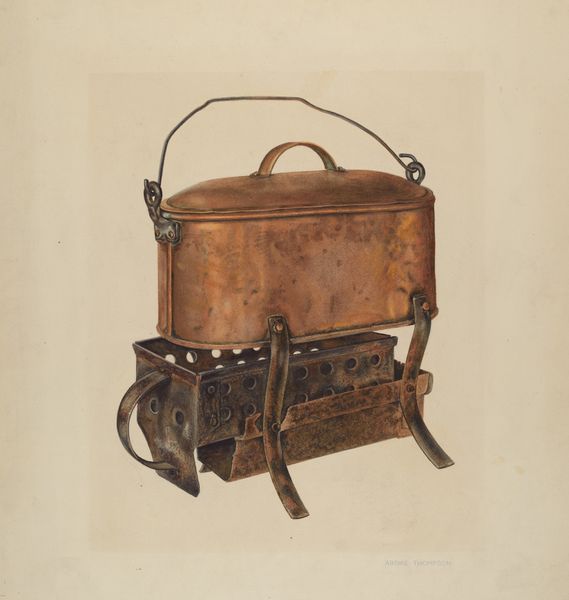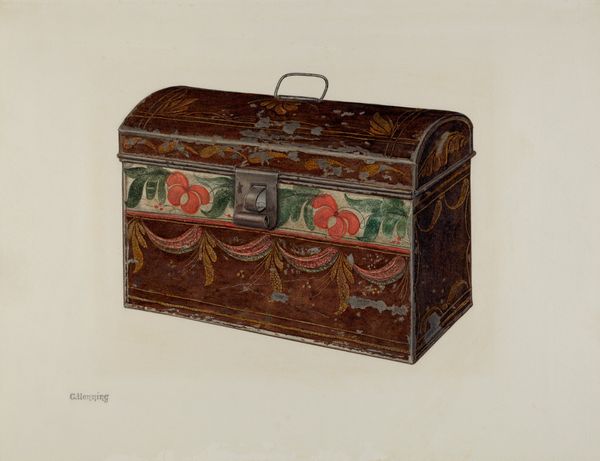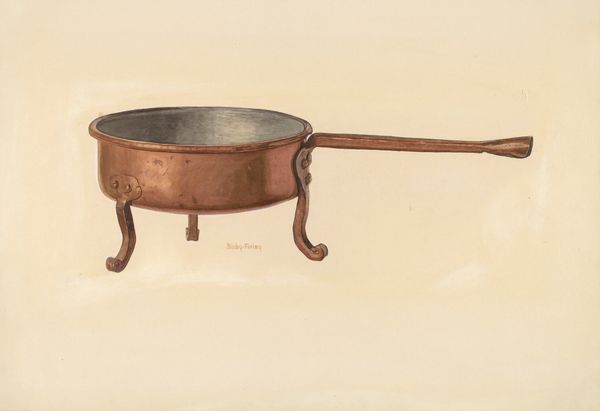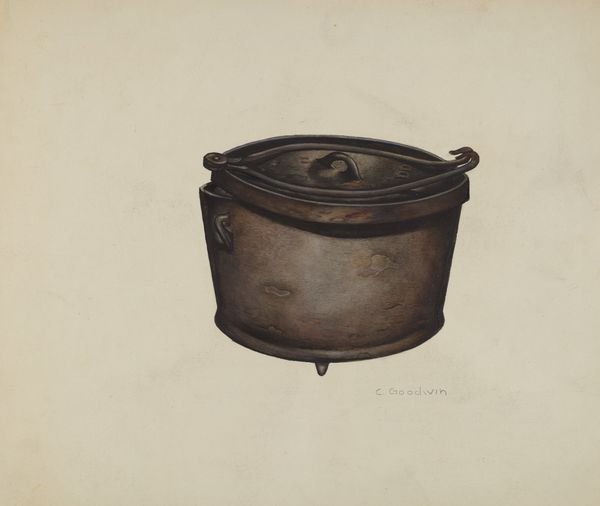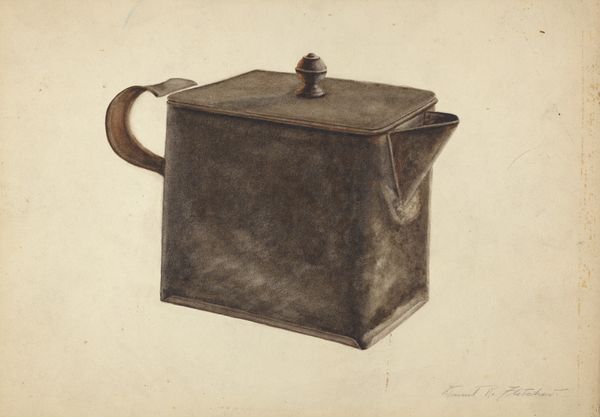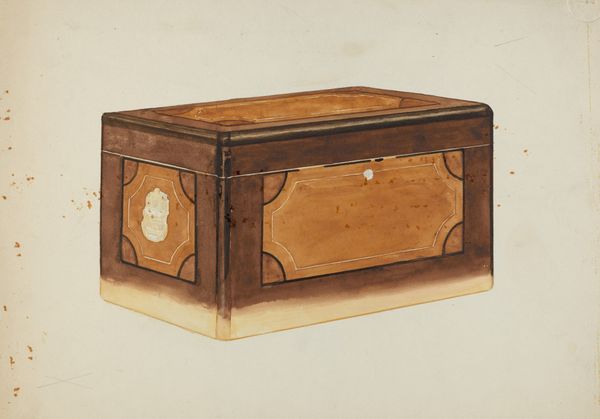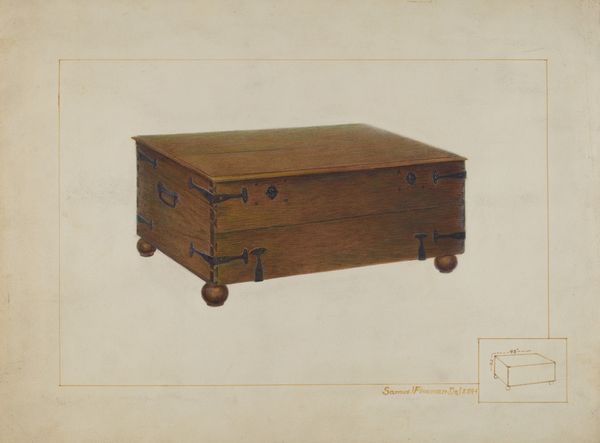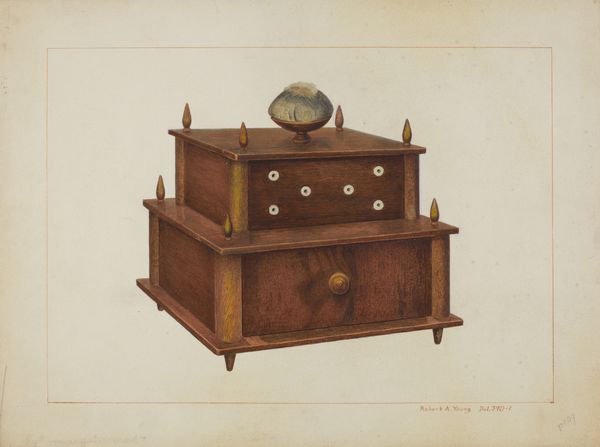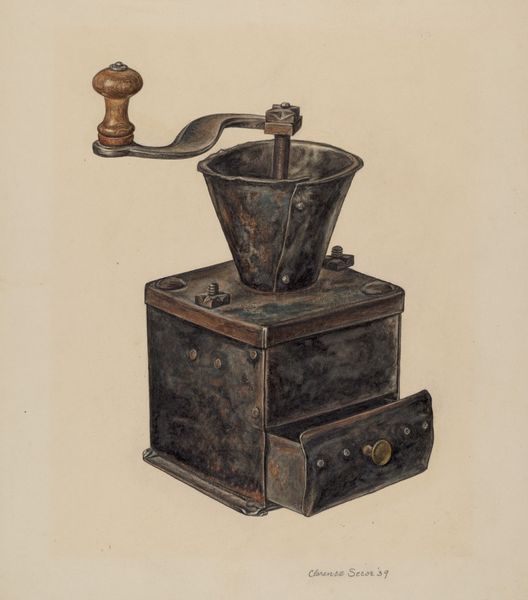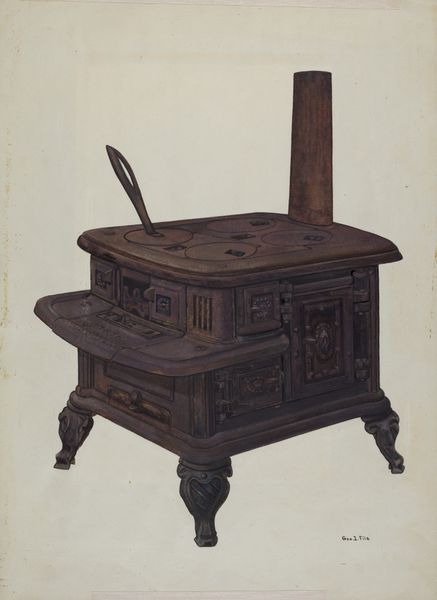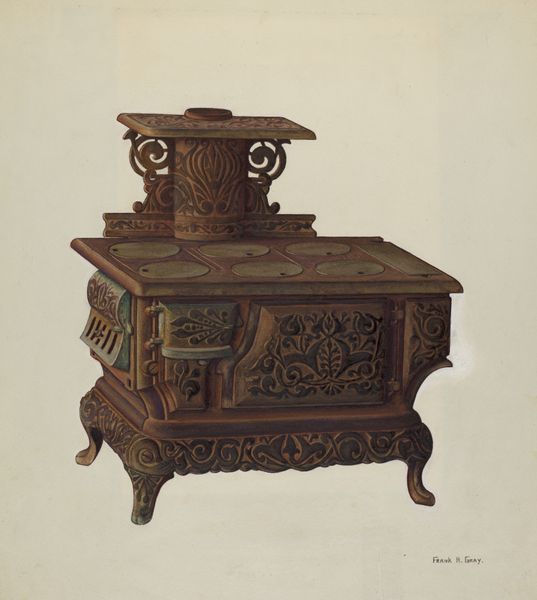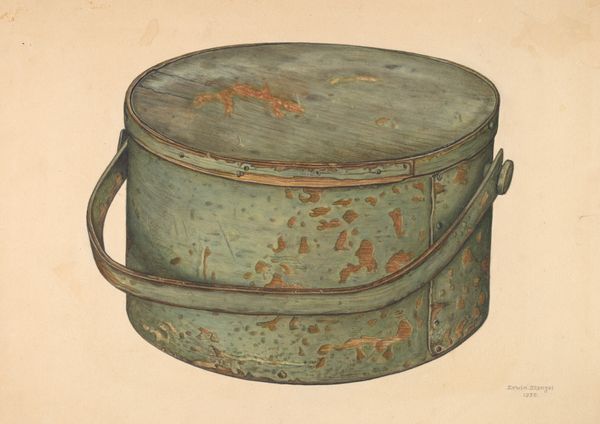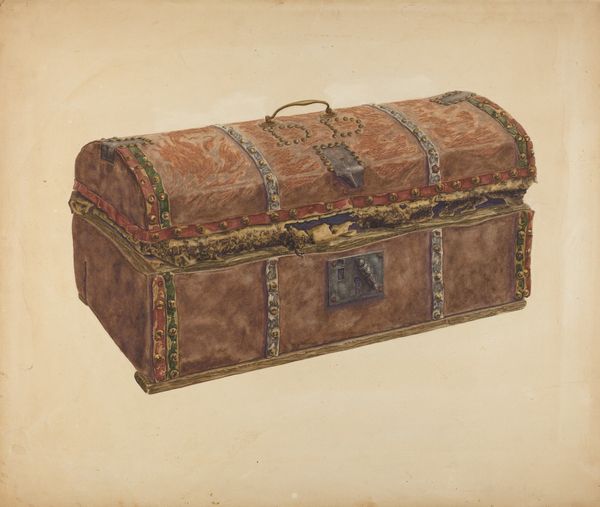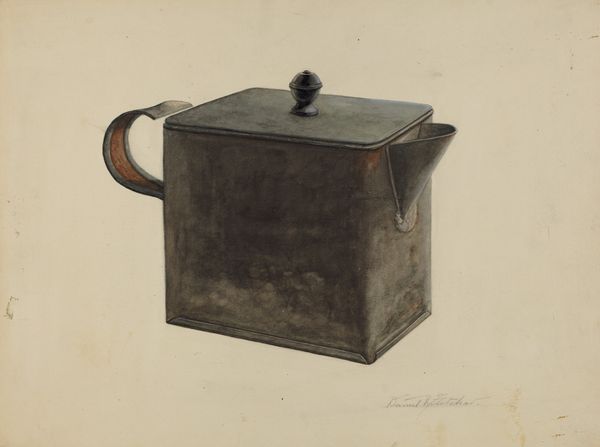
drawing, watercolor
#
drawing
#
sculpture
#
charcoal drawing
#
oil painting
#
watercolor
#
decorative-art
#
watercolor
#
realism
Dimensions: overall: 39.7 x 47.7 cm (15 5/8 x 18 3/4 in.) Original IAD Object: 13 1/2" wide; 9 1/2" deep; 5 1/2" high; largest pan: 3 1/4" in diameter
Copyright: National Gallery of Art: CC0 1.0
Editor: Here we have Einar Heiberg’s “Toy Stove,” likely made between 1935 and 1942. It’s created using watercolor, charcoal and drawing, a captivating rendering of domestic life. What particularly strikes me is the detailed depiction of materials – the textures of metal and the gleaming surfaces of the pots. What stands out to you when you look at this piece? Curator: What interests me most is how Heiberg depicts these commonplace objects, a stove and cookware, with such meticulous detail, bordering on reverence. This wasn’t just about replicating an image; it’s about elevating the everyday through the act of representation itself. Consider the social context. Mass production was changing the accessibility of these goods. How does Heiberg’s labor in crafting this image comment on industrialized making? Editor: So, you're saying that the very act of *making* this detailed artwork elevates it above being just a picture of ordinary things. The labor becomes part of the statement? Curator: Exactly! The careful rendering of each pot, each brass fitting on the stove transforms them from mere utilitarian objects into something worthy of artistic attention. Also, think about what owning these objects meant, in the context of a growing consumer culture. It’s interesting to consider this as a commentary on the materiality of the home and consumerism during that era. Editor: That makes a lot of sense. The work is more than just the objects it depicts; it's about their production and social context. Is there any symbolic dimension too? Curator: Symbols, here, are perhaps less overt than we expect; however, in some way it represents domesticity. How are those roles shifting in the 30’s, and what did household “stuff” say about one's identity in society at the time? I'd wonder about this piece as a microcosm of the larger economic and cultural landscape. Editor: This has given me a lot to think about. Thanks! I hadn't considered the making of the piece as a form of cultural commentary. Curator: Precisely! Materiality in art invites us to look beyond the surface and think deeply about creation, labor, and cultural significance.
Comments
No comments
Be the first to comment and join the conversation on the ultimate creative platform.
